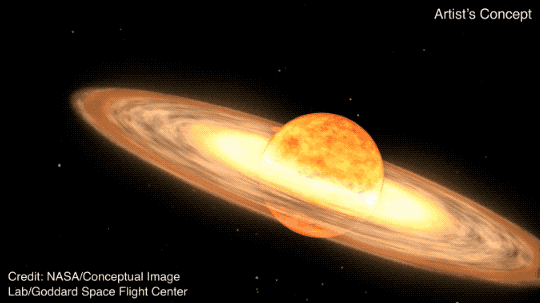Outer Space
Scientists Discover 27,500 Asteroids in Old Telescope Images Using A.I.
While most of the team’s new finds are located in the main asteroid belt, about 100 are near-Earth asteroids that pass close to our planet's orbit
An Ancient Maya Practice Could Be the Key to Growing Vegetables on Mars
Researchers are exploring whether intercropping—a technique of growing different types of plants in close proximity to one another—could be the secret to agriculture on the Red Planet
See New Images of the Horsehead Nebula, Captured in Striking Detail by the James Webb Telescope
The beautiful infrared imagery features one of the best known locations in space to study the evolution of stars and interstellar matter
How to Watch the Dazzling Eta Aquarid Meteor Shower, Bringing an Unusual 'Outburst' to Skies This Weekend
This year's spectacle will be more impressive than usual, as the Earth passes through a concentrated clump of 3,000-year-old comet debris
Original 'Star Trek' Enterprise Model Resurfaces Decades After It Went Missing
The model used in the original series' opening credits is now back with Eugene Roddenberry Jr., the son of the show's creator
Voyager 1 Sends Clear Data to NASA for the First Time in Five Months
The farthest spacecraft from Earth had been transmitting nonsense since November, but after an engineering tweak, it finally beamed back a report on its health and status
A Rare Nova Explosion Will Soon Bring a 'New Star' to the Night Sky—How to Catch a Glimpse
In an event that occurs only once every 80 years, a distant remnant of a star will grow much brighter, briefly becoming visible to Earth
A Stellar Collision Birthed the 'Dragon's Egg' Nebula, a Puzzling Structure in the Milky Way
The colorful cloud of gas and dust has a violent origin—and this explains the unusual traits of two massive stars within it, astronomers say
Astronomers Discover a 'Sleeping Giant' Black Hole in Our Galaxy—the Second-Closest Known to Earth
Called Gaia BH3, the dormant black hole is 33 times more massive than the sun, making it the largest recorded stellar black hole in the Milky Way
The Seven Most Amazing Discoveries We’ve Made by Exploring Mercury
Only two robotic missions have made it to the Swift Planet, but they were crucial for upending many false assumptions of that sun-scorched world
Meteorites Are Becoming Harder to Find as They Sink Into Antarctica's Melting Ice
The disappearing space rocks are burying valuable clues into the history and composition of our solar system, according to a new study
How to Watch the Brilliant Lyrid Meteor Shower This Month
Fiery streaks will illuminate the night sky from April 15-29, with the spectacle's peak occurring from April 21-22
See NASA’s Initial Moon Buggy Concepts, Expected on the Moon by 2030
Three companies are competing to design NASA's lunar terrain vehicle (LTV) for the agency’s Artemis campaign
Watch the Total Solar Eclipse From Your Home With These Live Streams Online
Not in the path of totality? See the moon blot out the sun, revealing its magnificent corona, from your computer or phone
How Do Animals React to a Total Solar Eclipse? Scientists Document Strange and Surprising Behaviors
Nature enthusiasts work with researchers to figure out how creatures respond to the celestial phenomenon
NASA Will Create a New Time Zone for the Moon, Called Coordinated Lunar Time
With dozens of lunar missions on the horizon, a standard time-keeping system for the moon will assist with precise navigation, docking and landing
Falling Object That Crashed Into Florida Home May Be Debris From the International Space Station
Nobody was hurt by the mysterious, two-pound object, but experts speculate it may be a piece of batteries ejected from the station in 2021
Listen Live to the Total Solar Eclipse, Transformed Into a Real-Time Musical Composition
A composer based at San Francisco’s Exploratorium museum will use data coming from the eclipsed sun to create an out-of-this-world “sonification” on April 8
Astronomers Capture Dazzling New Image of the Black Hole at the Milky Way's Center
The first image of the black hole taken in polarized light, the new view shows the supermassive structure's magnetic fields and hints that it could be hiding an enormous jet
Why Scientists Are Calling for the Moon to Be Better Protected From Development
Only a few lunar sites are ideal for certain cutting-edge research—and they’re under threat from mining, satellites and bases, scientists argue
Page 1 of 70
:focal(1920x1097:1921x1098)/https://tf-cmsv2-smithsonianmag-media.s3.amazonaws.com/filer_public/48/ed/48ed9748-7021-489a-a4c9-daf2d57d3cd1/angledview.png)
:focal(904x706:905x707)/https://tf-cmsv2-smithsonianmag-media.s3.amazonaws.com/filer_public/54/ec/54ec6205-f359-454f-be12-6cd6e3b0171e/journalpone0302149g004.png)
:focal(308x571:309x572)/https://tf-cmsv2-smithsonianmag-media.s3.amazonaws.com/filer_public/1d/b6/1db6560a-ff52-4a96-8352-098b9c19b152/horsehead2.webp)
:focal(512x341:513x342)/https://tf-cmsv2-smithsonianmag-media.s3.amazonaws.com/filer_public/68/38/68389cd5-7ba9-42f1-afb5-937a0bfd18ca/8711805373_c1221fe8a3_b.jpg)
:focal(2167x2167:2168x2168)/https://tf-cmsv2-smithsonianmag-media.s3.amazonaws.com/filer_public/21/e0/21e01f01-f286-4f57-bc46-5d031b7f727f/enterprise12.jpg)
:focal(2016x1133:2017x1134)/https://tf-cmsv2-smithsonianmag-media.s3.amazonaws.com/filer_public/32/30/3230d19e-cc50-4905-840c-7f3afeb2a0c3/e1-pia26275-voyager-copy-16.jpg)

:focal(1094x1354:1095x1355)/https://tf-cmsv2-smithsonianmag-media.s3.amazonaws.com/filer_public/29/3e/293ecff1-66d0-4e59-b1af-4e2a5e17339b/dragon1.jpg)
:focal(580x331:581x332)/https://tf-cmsv2-smithsonianmag-media.s3.amazonaws.com/filer_public/19/32/19321ec4-4ae9-4749-ad51-7ec75adbf27a/gaia1.webp)
:focal(720x542:721x543)/https://tf-cmsv2-smithsonianmag-media.s3.amazonaws.com/filer_public/11/a8/11a8f779-8331-4682-8899-246f3c2815ba/main_esa_ssiow_iridescent_mercury_web.jpg)
:focal(930x700:931x701)/https://tf-cmsv2-smithsonianmag-media.s3.amazonaws.com/filer_public/2f/af/2faf224c-16ac-4efd-8bb9-e19576c87625/arctic2.jpg)
:focal(4330x2887:4331x2888)/https://tf-cmsv2-smithsonianmag-media.s3.amazonaws.com/filer_public/10/0e/100e6843-676a-4707-b81e-79588851dda4/gettyimages-1220506373.jpg)
:focal(512x290:513x291)/https://tf-cmsv2-smithsonianmag-media.s3.amazonaws.com/filer_public/b9/29/b92903be-3fe2-459e-8dba-82551f19b9ab/lunar_buggy_2.webp)
:focal(3072x2048:3073x2049)/https://tf-cmsv2-smithsonianmag-media.s3.amazonaws.com/filer_public/f2/d0/f2d06687-f8a6-4950-b6c5-8fd5f42e036e/36336061393_f5361c15f0_6k.jpg)
:focal(800x602:801x603)/https://tf-cmsv2-smithsonianmag-media.s3.amazonaws.com/filer_public/87/d6/87d61ed0-16df-452f-9d5e-7710a4dcd105/eclipseanimals-v2.jpg)
:focal(2075x2075:2076x2076)/https://tf-cmsv2-smithsonianmag-media.s3.amazonaws.com/filer_public/10/82/108246d6-4b9b-44cc-8d85-e6478b5704fd/moom.jpg)
:focal(1511x1007:1512x1008)/https://tf-cmsv2-smithsonianmag-media.s3.amazonaws.com/filer_public/79/52/7952dc07-6f20-4ef4-81df-1a6d52ad2928/0701891orig.jpg)
:focal(360x207:361x208)/https://tf-cmsv2-smithsonianmag-media.s3.amazonaws.com/filer_public/7a/f9/7af9a4bb-32a7-463e-a681-f86cddcdc135/eclipse_1-1280-1.webp)
:focal(1000x1000:1001x1001)/https://tf-cmsv2-smithsonianmag-media.s3.amazonaws.com/filer_public/05/fd/05fd3550-7ef1-46e3-9229-188eb270a02b/sgra_polarimetric_press_image-032724-lores.jpg)
:focal(1527x1534:1528x1535)/https://tf-cmsv2-smithsonianmag-media.s3.amazonaws.com/filer_public/c5/70/c5705fb3-b875-4cf5-b01a-e463795178f9/moona2.jpg)